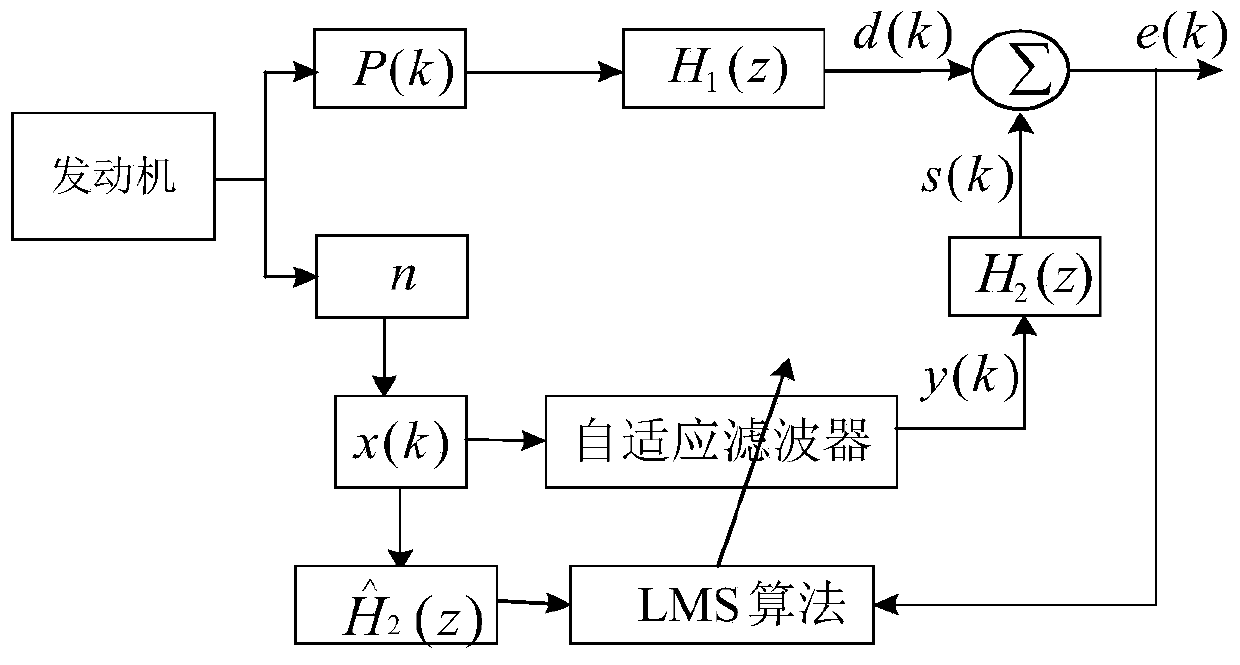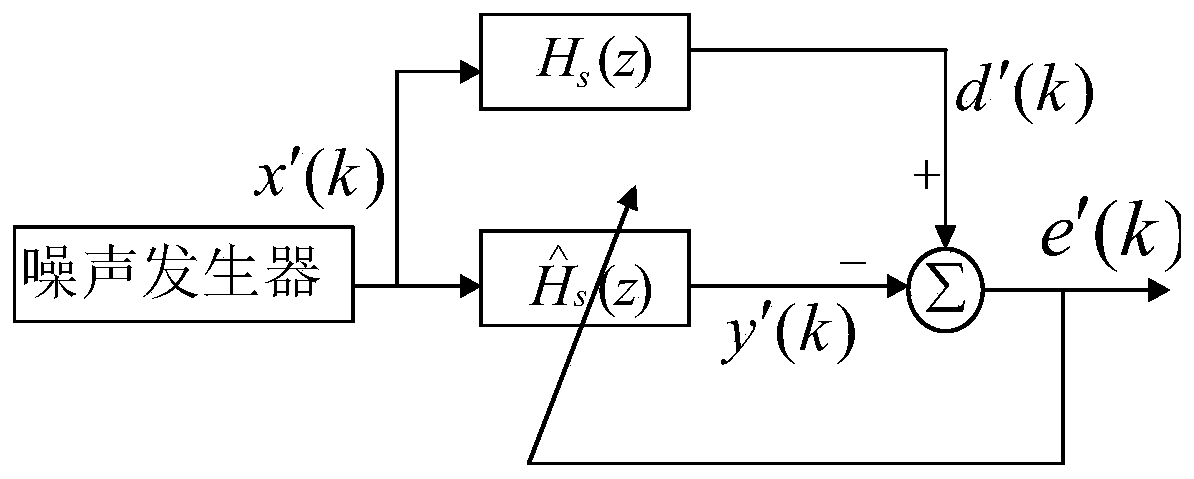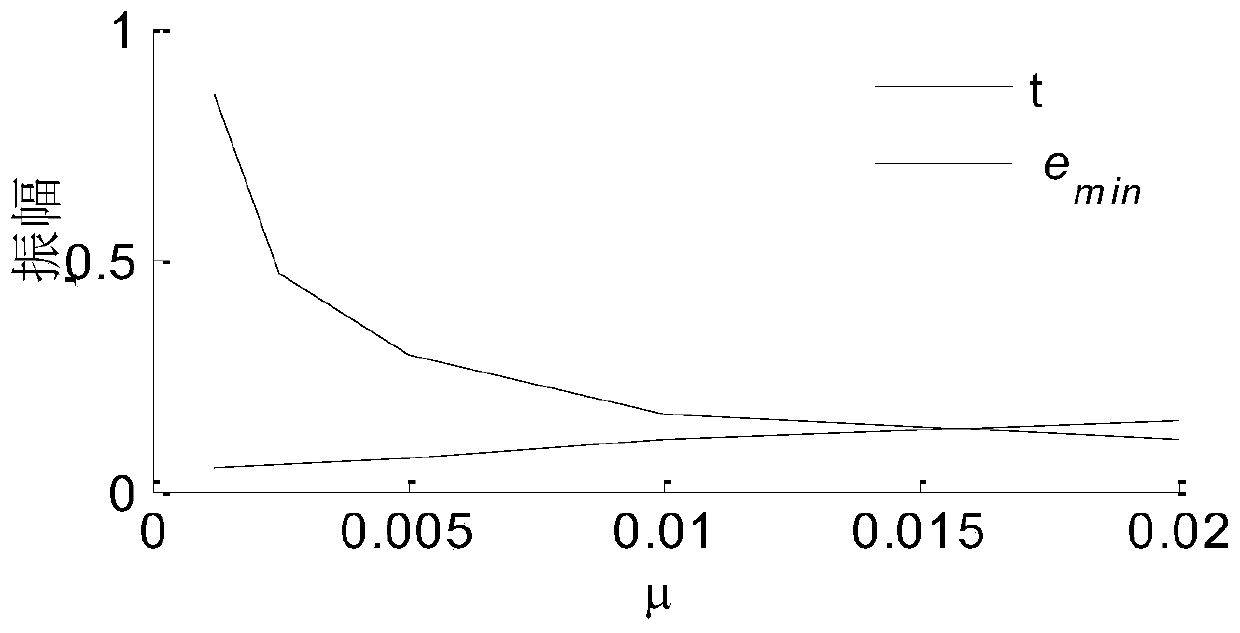Engine noise control method based on FXLMS algorithm
A noise control and engine technology, applied in the direction of sounding equipment, instruments, etc., to achieve the effect of reducing engine intake noise, small steady-state error, and reducing interior noise
- Summary
- Abstract
- Description
- Claims
- Application Information
AI Technical Summary
Problems solved by technology
Method used
Image
Examples
Embodiment Construction
[0041] The engine noise control method based on the FXLMS algorithm of this embodiment includes:
[0042] S1. Establish the main control system model of the engine intake noise with the FXLMS algorithm, and use the engine speed to construct the reference signal x(k) of the main control system model;
[0043]S2. Establish an off-line identification structure for the secondary channel transfer function H in the active control system model 2 (z) Perform identification and provide identification results to the active control system model;
[0044] S3. Using the identified active noise control system model to control engine noise.
[0045] The noise of the engine intake system is the main noise source of the sound field inside and outside the car, and it has a particularly significant impact on the noise inside the car. Intake noise is generated by the periodic opening and closing of the intake valve. When the intake valve opens, a pressure pulse is generated in the intake pipe. ...
PUM
 Login to View More
Login to View More Abstract
Description
Claims
Application Information
 Login to View More
Login to View More - R&D
- Intellectual Property
- Life Sciences
- Materials
- Tech Scout
- Unparalleled Data Quality
- Higher Quality Content
- 60% Fewer Hallucinations
Browse by: Latest US Patents, China's latest patents, Technical Efficacy Thesaurus, Application Domain, Technology Topic, Popular Technical Reports.
© 2025 PatSnap. All rights reserved.Legal|Privacy policy|Modern Slavery Act Transparency Statement|Sitemap|About US| Contact US: help@patsnap.com



